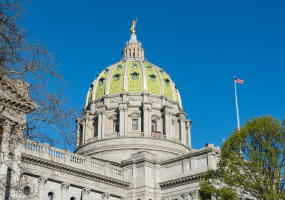 A new Independent Fiscal Office (IFO) report highlights the challenges of achieving long-sought-after property tax reform in Pennsylvania. The report is based on the IFO analyzing the $18.4 billion in residential property taxes paid by homeowners and renters in 2022 across the Commonwealth’s 67 counties. The data does not include commercial, industrial, or agricultural properties.
A new Independent Fiscal Office (IFO) report highlights the challenges of achieving long-sought-after property tax reform in Pennsylvania. The report is based on the IFO analyzing the $18.4 billion in residential property taxes paid by homeowners and renters in 2022 across the Commonwealth’s 67 counties. The data does not include commercial, industrial, or agricultural properties.
The study notes that the homestead exemption for primary residences reduced school property taxes by $673 million in 2022 and that the tourist-heavy Poconos region (with a significant population of residents who commute to New York City) has the highest property tax burden in the state. This means that school districts have had to grow to support the increased population and costs to support the schools. The IFO also found that the other top 10 counties in Pennsylvania with the highest property tax burdens border New Jersey or face fast population growth and accounted for 37.3 percent of all property taxes paid in 2022.
By contrast, the counties in the bottom 10 percent of tax burden are in the rural northern and central regions. This means that the political drive to address rising property taxes most likely comes from lawmakers who live in high population districts with high tax burdens.
The PA Chamber has offered the business community’s perspective on the impact of property taxes on employers, as taxes paid by businesses account for a significant portion of overall property tax revenue in Pennsylvania. In fact, the IFO noted that in FY 2020-21, rental and commercial properties contributed $6.4 billion, nearly 41 percent of the overall school property tax revenue generated. That staggering amount also means that property taxes make up a sizable share of the total tax burden that businesses carry. The Council on State Taxation has found that property taxes paid by businesses total $13.2 billion and account for 36 percent of the total business tax burden in the Commonwealth. Of course, Pennsylvania’s high tax burden makes the state less competitive and attractive to investment, which means fewer jobs and less overall economic growth.
The PA Chamber has over the years supported measures to constrain property tax increases, including Act 1 of 2006, which limited local school districts from increasing property taxes beyond the rate of inflation, except under certain circumstances; and Act 25 of 2011, which narrowed the Act 1 exceptions to provide more meaningful protections for taxpayers. The PA Chamber also supports legislative efforts to limit the practice of “spot appeals” and has long held that county property assessments should occur regularly and uniformly.